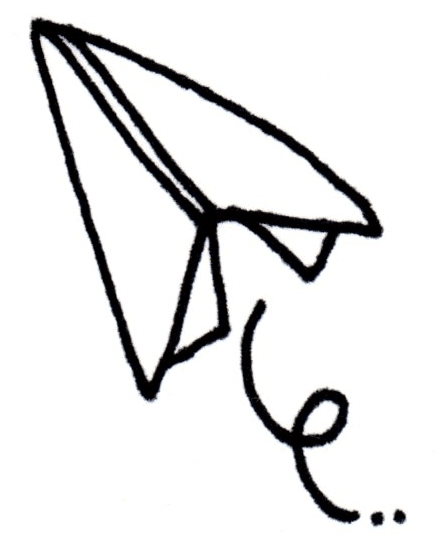Eczema friendly baby wipes? Ingredients to watch out for and practical alternatives



The myriad of baby wipe brands now available makes it hard for parents to choose the right product for their child at the best of times. It’s even more difficult when you have a child with eczema. In this article, we look at what goes into baby wipes and help you to choose products which are less likely to aggravate your child’s eczema. If ready-made brands prove unsuitable, we show you how easy it is to make your own eczema-friendly baby wipes using natural cleansers and moisturisers, as well as looking at alternative ways to keep your little ones fresh and clean.
When you’ve got a young family to clean up after, there’s nothing like the convenience of baby wipes. Whether you’re wiping the remnants of lunch from your little one’s faces, cleaning bottoms, or removing goodness-knows-what from their inquisitive fingers, a baby wipe is the quick and easy solution to a myriad of parental problems. However, as any parent of a child with eczema will know, things are rarely that simple. All too often, the solution in which baby wipes are soaked can aggravate sensitive skin. This can cause flare-ups or a worsening of the eczema area. Fortunately, the increasing prevalence of childhood eczema and allergies means that manufacturers are now producing baby wipes which can be used on children with sensitive skin and skin conditions like eczema. We look at which ingredients are likely to aggravate or even cause eczema and suggest practical, eczema-friendly alternatives.
What are baby wipes made from?
If you’re considering using baby wipes on your child with eczema you need to be aware of a potential reaction to both the fabric and the solution in which the fabric is soaked.
The fabric
When choosing baby wipes for sensitive skin, look for versions made with natural materials such as bamboo or wood pulp. Most major brands are made from nylon or polyester. Unfortunately, for a small number of children with eczema, these synthetic materials can cause a problem. That said, growing awareness of the environmental impact of baby wipes means that there are now brands using natural products.
The fluid
However, for a majority it is the fluid the fabric is soaked which their skin is unable to tolerate. And this is where it gets complicated. The ingredients lists of baby wipes are, for the average person, unintelligible. Here’s the ingredients list from the label of two popular baby wipe brands
- Johnson’s Baby Extra Sensitive Wipes – Aqua, Glycerin, Coco-Glucoside, Glyceryl Oleate, Glyceryl Polyacrylate, Carbomer, Lauryl Glucoside, Polyglyceryl-2 Dipolyhydroxystearate, Citric Acid, Sodium Hydroxide, p-Anisic Acid, Phenoxyethanol, Sodium Benzoate.
- Simple Baby Moisturing Wipes – Aqua, Phenoxyethanol, Paraffinum Liquidum, Carbomer, Benzoic Acid, Coco-Glucoside, Sodium Hydroxide, Dehydroacetic Acid, Disodium EDTA, Panthenol, Bisabolol, Pantolactone, Anthemis Nobilis Oil
Apart from being unpronounceable most of these ingredients go by at least 5 different names so while these two ingredients list look different they are actually remarkably similar. No wonder we’re confused!
Put simply, most baby wipes are made mainly from water and the other ingredients act as moisturising agents and preservatives which help to stop the wipe from drying out. Other chemicals play a role in keeping the finished product to the right consistency and some act as cleaning agents or fragrance. Most of these chemicals are benign in spite of their scary sounding names, but some are known to either trigger allergic reactions or cause skin irritation in a small proportion of the population.
Common eczema aggravating ingredients in baby wipes
When choosing baby wipes for a child with eczema, the important thing is what is left out, rather than what is put in to the wipe. Common ingredients which can trigger or aggravate eczema for are:
Parabens
These preservatives may cause contact dermatitis in people that are sensitive, and are currently being phased out of baby products sold in the EU. According to DermNet NZ, paraben sensitivity causes classic allergy contact dermatitis reactions. Whilst recent medical studies like this overview of parabens and allergic contact dermatitis have found that paraben sensitivity is relatively rare. However, children with eczema are more susceptible to skin irritation so we recommend taking care with paraben exposure, particularly with babies and toddlers aged 0-3. A recent 2021 medical study into the prevalence of atopic dermatitis in children aged 0-3 highly exposed to parabens found that ‘the prevalence of atopic dermatitis was significantly higher in children with high urinary concentrations of parabens than in those with low concentrations1.
Methylchloroisothiazolinone/methylisothiazolinone (also known as MCI and MI respectively)
Both of these preservatives are known to cause contact dermatitis. A medical study into contact dermatitis and methylisothiazolinine states that ‘MI is an important emerging allergen whose sensitization frequency is rising’2. A 2016 clinical review, even called the significant increase in contact allergies caused by MI an ‘epidemic’3. The publicity surrounding them is causing them to fall out of favour with the manufacturers.
Phenoxyethanol
Phenoxyethanol is another preservative known to cause skin irritation in a small proportion of the population. Although, given how often freshly wiped hands (and wipes themselves) end up in little one’s mouths, I find the fact that the EU has banned its use in products for use around the mouth and on lips rather more concerning. According to the Campaign for Safe Cosmetics, ‘infant oral exposure to phenoxyethanol can acutely affect nervous system function’4. This chemical has become increasing popular as manufacturers have reformulated products to avoid parabens and MCI/MI.
Sodium benzoate (aka benzoic acid)
According to a report published by the World Health Organisation, ‘the acute toxicity of benzoic acid and sodium benzoate in humans is low. However, both substances are known to cause contact dermatitis’5. If your little one‘s skin does react to a specific baby wipe brand, this ingredient is definitely on the list of possible culprits. As with phenoxyethanol, the chemical has become increasing popular as products are reformulated to avoid parabens and MCI/MI
Polysorbate and ceteareth
While these chemicals have a low risk of causing skin irritation themselves, they are at high risk of contaminants that are known to cause skin irritation.
If in doubt, opt for baby wipes specially formulated for ‘sensitive skin’. These will be free from worst offenders of fragrance, parabens, MCI and alcohol. The EWG database is a great resource for checking ingredients. It also has an overall safety rating of a huge range of skincare products and including baby wipes brands.
Choosing baby wipes for children with eczema
If your child has eczema, it’s best to look at the brands which are specially formulated for sensitive skin. These brands tend avoid the more irritating ingredients. Look on the baby care aisle of any supermarket – there are certainly plenty of brands to try! It’s useful to know that The British Skin Foundation mark is only available to companies which support its work financially. A brand which doesn’t have this mark may well be no worse for your baby’s skin than one which does.
Trial and error
Baby wipes affect children with eczema in different ways. Some babies and children won’t react at all, while others will have a severe reaction. Unfortunately, the only way to know whether baby wipes aggravate your child’s eczema is to try them out. Of course, it’s best to be cautious when you’re testing baby wipes on your child. Try using them on the hands first, then the face. Leave bottom-wiping until last as it’s not so easy to spot an adverse reaction once your child’s nappy is back in place. If one brand of baby wipes doesn’t suit your child, cautiously introduce an alternative make. You’ll probably have to try three or four different manufacturers before you find wipes which you can use with confidence.
What alternatives are there to baby wipes?
If baby wipes really do prove unsuitable, you have the option to make your own (surprisingly simple!) or to find alternative ways to keep your child clean. The obvious alternative to baby wipes is a pad of cotton wool (pleats, balls or even make-up removal pads are all effective) and some fresh, clean water. If you’re going out, you can transport some warm water in a flask.
Another alternative which is growing in popularity is the washable wet wipe. You can buy DIY baby wipe kits made from natural fibres on the internet. You’ll need to pre-soak these in your own home-made solution. Not only are they more environmentally-friendly as they can be washed and reused rather than thrown away, you can rest assured that you know exactly what has gone into them.
How to make your own eczema friendly baby wipes
It takes a little effort but making your own wet wipes gives you complete control over the ingredients.
We like the method used by Wellness Mama who advises6:
- Cut a roll of paper towels in half using a sharp knife. You’ll need to use a brand that holds together well when wet like Bounty.
- Accordion fold the wipes into an air-tight plastic lunch box or food take-away tub
- Mix together 400ml cooled boiled water, one tablespoon pure aloe (check for preservatives), one tablespoon witch hazel, one tablespoon liquid soap (again check the ingredients), 10 drops of grapefruit seed extract, and one teaspoon of almond oil and stir. Add essential oils, if desired, although if your child is particularly sensitive, leave these out or use calendula or chamomile instead.
- Pour over the paper towels and let them absorb the liquid for about five to 10 minutes.
- Flip the container over to make sure wipes are well soaked.
- Use within a week.
Our Sources
- An overview of parabens and allergic contact dermatitis. Farhaan Hafeez, Howard Maibach. Skin Therapy Lett. Jul-Aug 2013;18(5):5-7.
- Increased Prevalence of Atopic Dermatitis in Children Aged 0–3 Years Highly Exposed to Parabens. Arafune, J.et al 2021. International Journal of Environmental Research and Public Health, [online] 18(21), p.11657. Available at: https://pubmed.ncbi.nlm.nih.gov/34770171/ [Accessed 8 March 2022].
- Contact dermatitis to methylisothiazolinone. Scherrer, M. et al. 2015. Anais Brasileiros de Dermatologia, [online] 90(6), pp.912-914. Available at: https://www.ncbi.nlm.nih.gov/pmc/articles/PMC4689087/ [Accessed 8 March 2022].
- Dermatological Nursing – Article. Methylisothiazolinone and the contact allergy ‘epidemic’. Gorav N Wali, Susan M Cooper. 2016, Vol 15, No 1.
- Safe Cosmetics – Article Phenoxyethanol.
- World Health Organisation – Article. Opinion of the scientific committee on cosmetic products and non-food products intended for consumers concerning benzoic acid and sodium benzoate.
- Wellness Mama – Article. Natural Homemade Baby Wipes. Katie Wells. January 27, 2011. [Updated July 30, 2019]
As well as sharing our experience of bringing up an eczema child (and favourite allergy-friendly recipes), ScratchSleeves also manufacture and sell our unique stay-on scratch mitts and PJs for itchy babies, toddlers and children. We now stock sizes from 0-adult in a range of colours. Visit our main website for more information.
The Calm Skin Guide
Love our blog? It's also available in book format with:
- First hand accounts from parents & medical professionals
- Easy navigation
- Comprehensive index
- Additional material
Signed copies available at no extra cost
Written by:
Reviewed by:
Interesting article? Don't keep it to yourself...
Read next...
You may also find helpful...
Quick buy


Multi Buy Discount

Spend between £30 - £60 and save 5%
Spend between £60 - £120 and save 10%
Spend over £120 and save 15%
Discount automatically applied at checkout
No Quibbles Guarantee

ScratchSleeves abide by a no quibbles guarantee.
Free UK Postage

Free packing and postage on all UK orders. For overseas orders to Europe postage is from £3.50, to USA is £6.50 and to the rest of the world, from £3.75.








